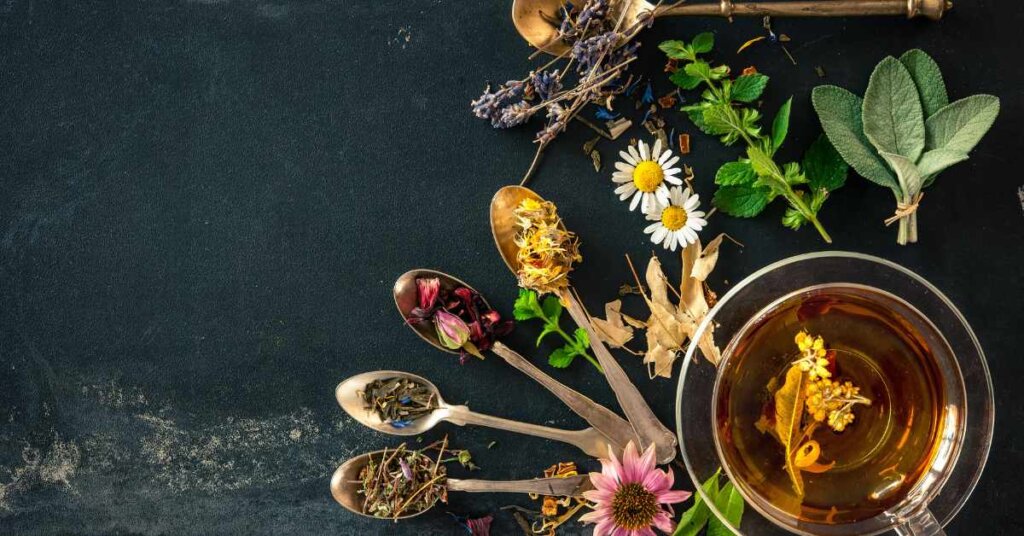Spring is already here and it is time to give your bodies a gentle reset. The best way to do it is with a cup of Blood Purifying Spring Tea. This traditional herbal blend combines some of nature’s finest cleansing herbs to support your body’s natural detoxification processes.
I first came across this recipe in Maria Treben’s classic herbal guide, and it has since become one of my go-to springtime rituals. That is why I decided to share this recipe with you, explain how each herb works, and offer some additional insights from modern research.
What is Blood Purifying Spring Tea?
Blood Purifying Spring Tea is a gentle herbal blend designed to cleanse the blood and support the liver and kidneys. According to traditional herbalism, it helps clear out toxins that may have built up over the winter months, leaving you feeling refreshed and energised.
The recipe calls for four main ingredients, each with its own unique properties. The combination works synergistically to promote detoxification and general well-being.
Blood Purifying Spring Tea Recipe
- 50 g Cowslip (Primula veris)
- 50 g Blooming elderflowers (Sambucus nigra)
- 15 g Stinging Nettle (Urtica dioica)
- 15 g Dandelion roots (Taraxacum officinale)
Instructions:
- Mix all the dried herbs together and store them in an airtight container.
- To prepare the tea, take one heaped teaspoon of the mixture.
- Pour ¼ litre of boiling water over it.
- Infuse for 3 minutes.
- Strain and enjoy.
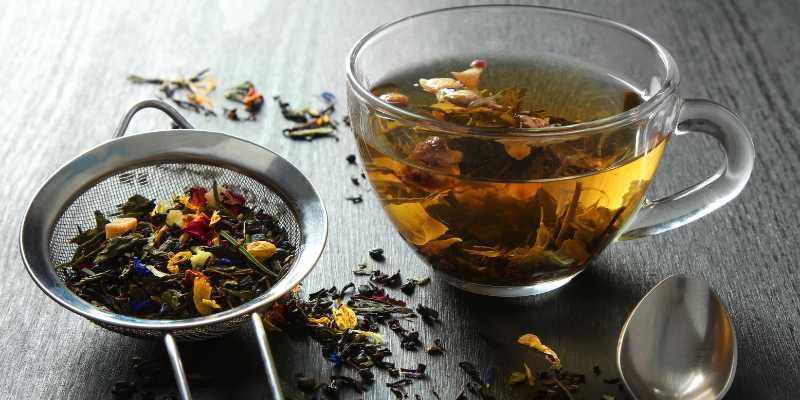
A Closer Look at the Ingredients
Cowslip (Primula veris)

A study confirms that cowslip is a rich source of natural, health-promoting substances, particularly polyphenols, which offer strong antioxidant and immune-enhancing effects.
Cowslip flowers have long been used to support the respiratory system. Their natural saponins help loosen mucus and ease breathing. In addition, they offer a gentle diuretic effect, aiding the kidneys in flushing out excess fluids and metabolic waste.
Modern analysis backs this up, revealing high levels of flavonoids like rutin and kaempferol—compounds known to support detox and strengthen the immune system.
Long valued in herbal medicine for cleansing the blood, cowslip has also been used to ease gout and rheumatic conditions by encouraging the removal of uric acid and inflammatory toxins from the body.
Elderflower (Sambucus nigra)
The stage of growth in elder plants matters. Studies show that blooming elderflowers, especially at their peak, offer the highest health value. One study found that they contain more antioxidants than the leaves or berries. The flowers were especially rich in quercetin 3-rutinoside, a flavonoid known to support the immune system and reduce inflammation.
Another study confirmed that elderflowers have the highest levels of polyphenols, compounds that protect the body from oxidative stress. These findings support their traditional role as a gentle detoxifying herb. They help the body release toxins through the skin and lymph system—just what we need after winter.
While the original version of this recipe used elderflower shoots, I chose to use the blooming flowers instead. The unopened flower buds (the shoots) are traditionally used for their diaphoretic effect, helping the body sweat out toxins. But raw elder shoots also contain cyanogenic glycosides. These can release cyanide if not prepared correctly. That’s an important reason I avoid them.
The blooming elderflowers feel like the right choice. They’re safe, effective, and backed by science. And in spring, they bring that perfect balance of lightness and strength.
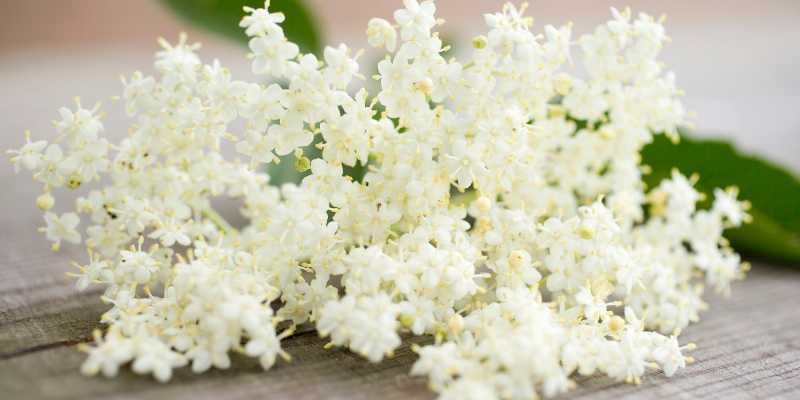
Stinging Nettle (Urtica dioica)
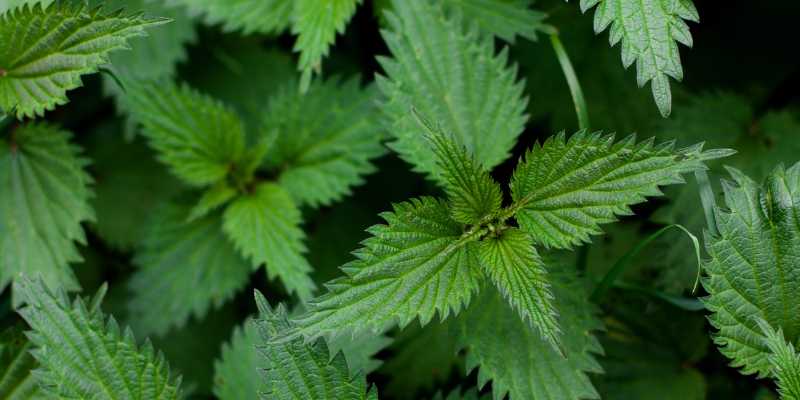
Stinging nettle is a classic detoxifying herb, used for centuries in both traditional and modern herbalism. On my own herbal shelf, it’s the queen—always at the front. I use it regularly, both as a single herb and in blends. It’s packed with minerals, especially iron, silica, magnesium, and calcium, and is widely recognised as a blood purifier.
The young leaves are rich in polyphenols, vitamins, fibre, and chlorophyll, making nettle a true nutritional powerhouse. Scientific studies highlight a wide range of benefits, including anti-inflammatory, antioxidant, analgesic, and immune-supportive actions.
Nettle also supports the kidneys, encouraging the body to flush out toxins and reduce fluid retention—key actions during spring cleansing. As a mild diuretic, it helps clear metabolic waste without depleting the body.
Modern research has expanded what herbalists have long known. Nettle may help balance blood sugar, support cardiovascular health, and ease symptoms of arthritis and allergies. These findings reinforce its role as a gentle, nourishing herb—one that cleanses while rebuilding.
Dandelion Root (Taraxacum officinale)
Dandelion root has long been revered in traditional medicine as a liver tonic and natural detoxifier. Today, modern research strongly supports this use. The root is rich in inulin (a prebiotic fibre), taraxasterol, and phenolic acids. These compounds stimulate bile production, support fat digestion, and help the liver carry out its daily detox work.
Dandelion root also has diuretic properties, encouraging the kidneys to flush out excess water and metabolic waste. This gentle detox action helps the body feel lighter and more balanced during seasonal shifts.
Recent studies show that dandelion has hepatoprotective effects, reducing oxidative stress and improving liver enzyme profiles in both animal and cellular models. Its antioxidant action protects cells and supports metabolic function, making it an ideal herb for springtime renewal.

Safety Overview of the Herbs in Blood Purifying Spring Tea
While all four herbs in this blend are widely used and generally considered safe, it’s important to be aware of a few safety considerations.
Cowslip
Cowslip is a mild and supportive herb, but it’s not suitable for everyone.
- It contains salicylates, which may cause reactions in people who are sensitive to aspirin.
- It should be avoided during pregnancy, as it may stimulate the uterus in high doses.
- Large amounts may cause nausea, dizziness, or allergic reactions in rare cases.
Elderflower
The fully bloomed elderflowers used in tea are considered safe and well-tolerated.
- However, other parts of the plant—young shoots, unripe berries, and stems—contain cyanogenic glycosides. These can release cyanide if eaten raw or improperly prepared.
- For safety, only use dried or properly processed blooming elderflowers in herbal infusions.
Stinging Nettle
Stinging nettle is highly nutritious and gentle when dried and brewed.
- The fresh plant can sting the skin due to natural acids and histamine-like compounds. This effect disappears when the plant is dried or cooked.
- Although it’s rich in minerals, long-term use may increase fluid and electrolyte loss if not paired with a nourishing, mineral-rich diet.
- Use caution if you are taking blood pressure medications, blood thinners, or diuretics, as nettle may interact with them.
Dandelion Root
Dandelion root is well known for its liver and digestive support, and it is generally very safe.
- In some people, it may cause mild digestive upset or allergic reactions, especially in those sensitive to Asteraceae family plants (like chamomile or ragweed).
- Because it stimulates bile flow, it should be avoided in cases of gallbladder obstruction or gallstones unless under supervision.
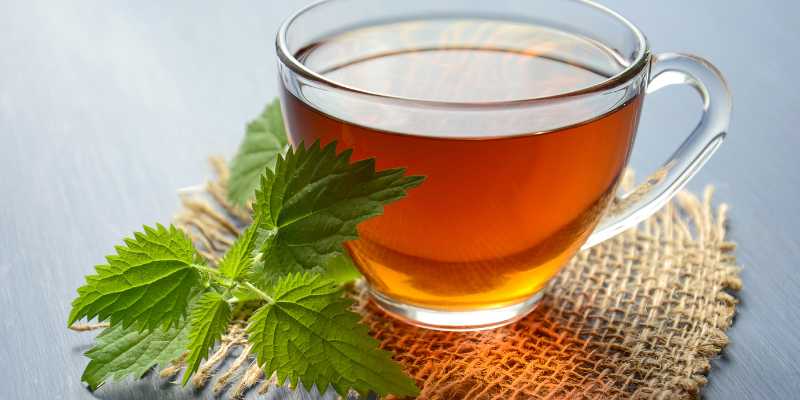
How to Enjoy Blood Purifying Spring Tea
For general support, one to two cups of this tea daily during the spring months is usually enough. It’s a gentle blend, but if you have a medical condition or take prescription medication, it’s always best to check with a healthcare professional first.
Personally, I like to take a more focused approach. I drink up to four cups a day, always on an empty stomach. I’ve noticed the herbs seem to work more effectively this way—without food getting in the way or slowing things down. When I’m using herbal infusions with a clear purpose, like a seasonal cleanse, I also skip the sweeteners. No honey, no extras—just the pure plant. It feels more intentional that way, like I’m giving the herbs space to do what they need to do.
Of course, not every cup has to be so purposeful. When I’m drinking herbs for comfort or pleasure, I’m happy to add a little honey or something soothing. But during spring, when I’m looking to reset and let go, I keep it simple. A quiet tea break mid-morning or in the afternoon becomes a small but grounding act of self-care—a way to tune into the season and support my body with a little more awareness.
Final Thoughts
Spring invites us to start fresh, and this gentle herbal tea is a lovely way to support that shift. Over the years, it’s become one of my seasonal habits—something simple, grounding, and in tune with the rhythm of nature. It’s less about strict detoxing and more about clearing space—physically, mentally, and emotionally. A quiet way to ease into the season with more lightness and intention.
If it resonates, give it a try and see how your body responds. And if you’re curious about more natural ways to care for your health and wellbeing, you’re warmly invited to explore The Nature’s Magic Hub for more inspiration.
If you enjoyed this article, feel free to share it with your friends and family to spread the knowledge!
Don’t forget to follow us on social media for more tips, updates, and insights into natural remedies and holistic wellness.
Join our community and stay connected to discover the magic of nature for a healthier, happier life!

